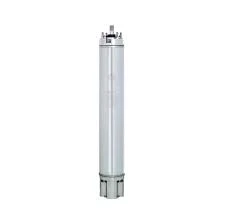Nov . 17, 2024 00:15 Back to list
How long is the lifespan of submersible well pumps in different conditions?
How Long Do Submersible Well Pumps Last?
Submersible well pumps play a crucial role in providing water for various applications, ranging from residential uses to agricultural needs. These pumps are designed to operate underwater, pushing water to the surface from deep wells. One common question many property owners and farmers have is How long do submersible well pumps last? The lifespan of these pumps can vary significantly based on a variety of factors.
On average, submersible well pumps can last between 8 to 15 years; however, some can exceed this range with proper maintenance and favorable conditions. The quality of the pump itself is an essential factor that influences its longevity. High-quality pumps, manufactured by reputable brands using durable materials, tend to last longer than lower-quality alternatives. Investing in a reliable pump can save money in the long term by reducing the need for frequent replacements.
Another significant factor affecting the lifespan of submersible well pumps is the quality of the water being pumped. If the water contains a high level of sand, silt, or other abrasive materials, it can cause increased wear and tear on the pump components. Similarly, corrosive water conditions, such as high acidity or saline concentrations, can lead to premature pump failure. Regular water testing and the installation of appropriate filtration systems can help mitigate these issues and extend the life of the pump.
The depth of the well in which the submersible pump operates also affects its lifespan. Deeper wells require pumps to work harder, which can lead to increased wear on the motor and other components. Choosing a pump with the correct power and specifications for the well depth is crucial for optimal operation and longevity.
how long do submersible well pumps last

Maintenance is another critical factor in determining how long a submersible well pump lasts. Regular inspections, monitoring performance, and addressing issues early can prevent minor problems from escalating into significant failures. For instance, checking for signs of wear, unusual noises, or changes in water flow can help identify potential issues before they require costly repairs or replacements. Additionally, it's advisable to schedule professional servicing annually to ensure the components are functioning correctly.
Environment plays a role as well. Submersible pumps located in areas with harsh environmental conditions, such as extreme temperatures or high humidity, may face additional challenges that can shorten their lifespan. Proper installation and protective measures can help shield the pump from environmental stressors.
Ultimately, while the average lifespan of a submersible well pump ranges from 8 to 15 years, with the right care and consideration, pumps can last significantly longer. By choosing high-quality equipment, conducting regular maintenance, and monitoring the conditions of both the water and the environment, property owners can maximize the longevity of their submersible well pumps.
In conclusion, understanding the factors that influence the lifespan of submersible well pumps can aid in making informed decisions about installation, maintenance, and replacement. Investing in quality products and proactive care can enhance their efficiency and durability, ensuring a reliable water supply for years to come.
-
Submersible Water Pump: The Efficient 'Power Pioneer' of the Underwater World
NewsJul.01,2025
-
Submersible Pond Pump: The Hidden Guardian of Water Landscape Ecology
NewsJul.01,2025
-
Stainless Well Pump: A Reliable and Durable Pumping Main Force
NewsJul.01,2025
-
Stainless Steel Submersible Pump: An Efficient and Versatile Tool for Underwater Operations
NewsJul.01,2025
-
Deep Well Submersible Pump: An Efficient 'Sucker' of Groundwater Sources
NewsJul.01,2025
-
Deep Water Well Pump: An Efficient 'Sucker' of Groundwater Sources
NewsJul.01,2025
-
 Submersible Water Pump: The Efficient 'Power Pioneer' of the Underwater WorldIn the field of hydraulic equipment, the Submersible Water Pump has become the core equipment for underwater operations and water resource transportation due to its unique design and excellent performance.Detail
Submersible Water Pump: The Efficient 'Power Pioneer' of the Underwater WorldIn the field of hydraulic equipment, the Submersible Water Pump has become the core equipment for underwater operations and water resource transportation due to its unique design and excellent performance.Detail -
 Submersible Pond Pump: The Hidden Guardian of Water Landscape EcologyIn courtyard landscapes, ecological ponds, and even small-scale water conservancy projects, there is a silent yet indispensable equipment - the Submersible Pond Pump.Detail
Submersible Pond Pump: The Hidden Guardian of Water Landscape EcologyIn courtyard landscapes, ecological ponds, and even small-scale water conservancy projects, there is a silent yet indispensable equipment - the Submersible Pond Pump.Detail -
 Stainless Well Pump: A Reliable and Durable Pumping Main ForceIn the field of water resource transportation, Stainless Well Pump has become the core equipment for various pumping scenarios with its excellent performance and reliable quality.Detail
Stainless Well Pump: A Reliable and Durable Pumping Main ForceIn the field of water resource transportation, Stainless Well Pump has become the core equipment for various pumping scenarios with its excellent performance and reliable quality.Detail
